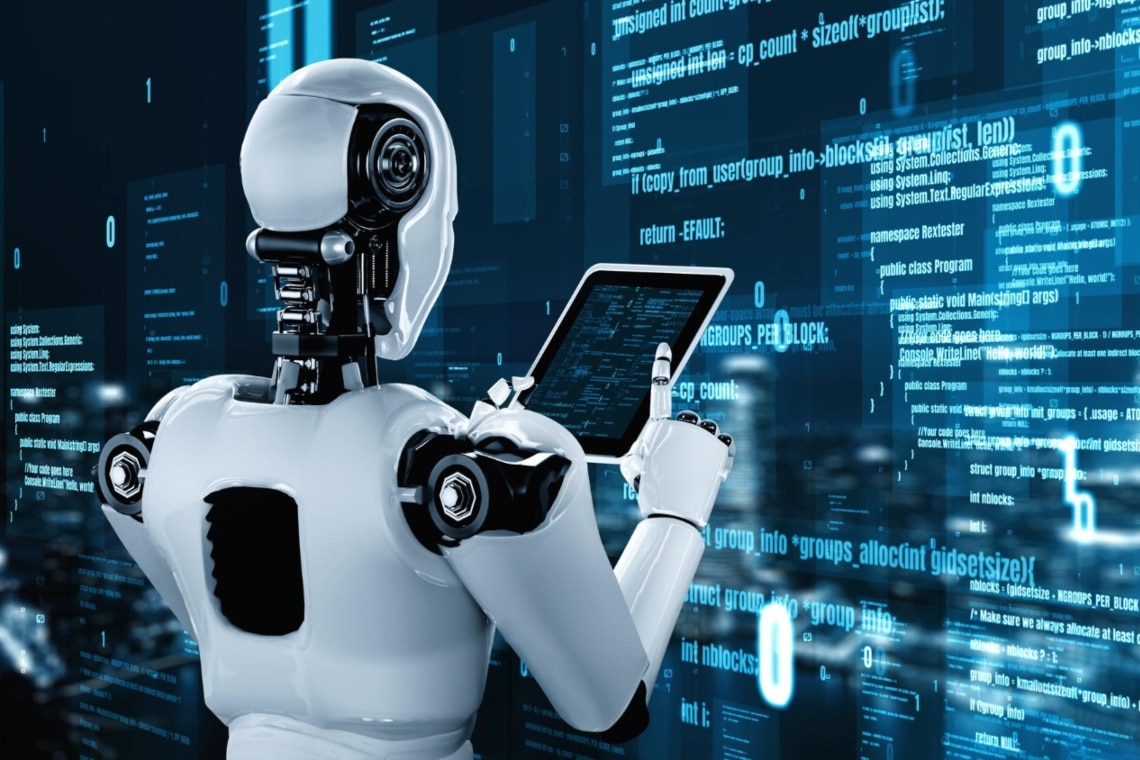Collaboration between distributed artificial intelligence and blockchain is now the future of banking and insurance.
More precisely, we know that distributed artificial intelligence (DAI or also called decentralized artificial intelligence) is a subfield of artificial intelligence research. This subfield is devoted to the development of distributed solutions to problems and is closely related to the field of multi-agent systems.
Blockchain, on the other hand, is the ultimate decentralized framework. Specifically, it deals with the intelligent management inherent in reading and writing to replicated databases. In blockchain, information is validated mathematically through an algorithm and not through the trust placed in a central entity.
These two decentralized structures, DAI and blockchain, have an urgency to work together. Otherwise, the loss of customers, even in the context of Industry 4.0, would be imminent.
Summary
The benefits of combining artificial intelligence and blockchain
The advantages of combining DAI and blockchain are numerous.
First of all, the possibility of creating one or more interconnected banking and insurance blockchains speeds up transactions, improving their security and transparency, as well as optimizing data control.
In addition, from this alliance between financial companies, there would be interesting developments in the perspective of personalization of products and services for the end customer. For example, customer care managed by chatbots and guided by machine learning and algorithms. This will promote a more satisfactory and quicker response to customer problems.
Moreover, given the imminent evolution of artificial intelligence, a channel such as blockchain will necessarily be needed for its purposes. Indeed, the blockchain environment is ideal for exchanging information and communicating securely.
This is because of its peer-to-peer network, which has a structure that functions broadly like the human brain, given the presence of nodes and the way in which information and data are recorded.
The way the blockchain works, in fact, is all about the exchanges between nodes in the system, which are valid for everyone in real-time. The novelty: there is no central authority to manage them.
Moving on to financial institutions, we know that their mission for the next few years will be to capture the new target audience of millennials. In other words, young people prefer the sharing economy to traditional financial services. The sharing economy is based on accessing and exchanging resources, rather than buying them.
Therefore, to win over the generation of millennials, a by no means small circle, it is necessary for finance to embrace collaboration between artificial intelligence and blockchain if it hopes to survive.
DAI and blockchain: the areas of improvement
As a result of the future interaction between artificial intelligence and blockchain, the sectors that will change and benefit will be many.
Among the first is the security sector. Indeed, detecting suspicious transactions is one of the challenges of the future for banks. Some are already currently employing machine learning services that can identify scams instantly.
Personalization, which is based on the recommendations system underpinning Facebook, Amazon and Spotify, in which “friends” suggest what to do, is set to spread widely.
Also not unimportant is the speed enhancement. The transfer of information and data will allow consumers better and faster interaction with financial institutions.
Using blockchain to give stakeholders the opportunity to collect loyalty card points and invest them in various marketplaces, with the peer-to-peer network tasked with making checks and balances automatic, is one of many possible medium-term scenarios.
As anticipated earlier, customer service will also benefit significantly. Indeed, the use of chatbots, programs capable of simulating human conversations, will be the constant of the future.
Chatbots will function for all intents and purposes like experts answering FAQs from Internet users who log on to the website. The same will be true for the development of algorithms capable of responding to various customer needs.
Finally, lending, which, after analyzing the login credentials of all customers registered on the blockchain, will enable faster and more effective release of funds.
The words of Orlovsky Maxim
Orlovsky Maxim, among the most internationally renowned experts on neuroscience, wrote an interesting post on Medium not long ago about blockchain and artificial intelligence.
In the post, Maxim writes:
“Starting with biological evolution and ending with free economy, evolution is always about competition and adoption.
What has accelerated the process of human advancement a million times? Language, as a communication tool […] So, here we have our main secret revealed: blockchain will make for multi-agent AI the same thing that written language has created for humans; it should provide means of accelerated evolution.”
This means that blockchain will be to artificial intelligence what written language has been to the human brain and its constant evolution.
Specifically, it will mean that as blockchain provides a channel to facilitate the secure exchange of data and information, the impact of artificial intelligence will be about the same as that of the advent of writing.
Artificial intelligence in Industry 4.0
With the large-scale diffusion of the association between artificial intelligence and blockchain, there would be interesting changes also for the world of Industry 4.0, as it would change how things are produced.
Specifically, we are not only talking about software, algorithms, automation, robots and hardware, but more complex concepts, such as devising and producing goods on demand, dematerialization and disintermediation.
It is important to define what is new in Industry 4.0 to get a clear picture of the situation. First, smart manufacturing, in which the production system will revolve around the monitoring of physical business processes by IT systems and decision-making processes will eventually be decentralized.
Also, the production of goods from scratch. With Industry 4.0, other aspects pertaining to the intellectual property of the good, copyright and the right to sell come into play.
Blockchain will play a key role in this system, as it will have to secure and control the identity of people, ensuring their anonymity.




